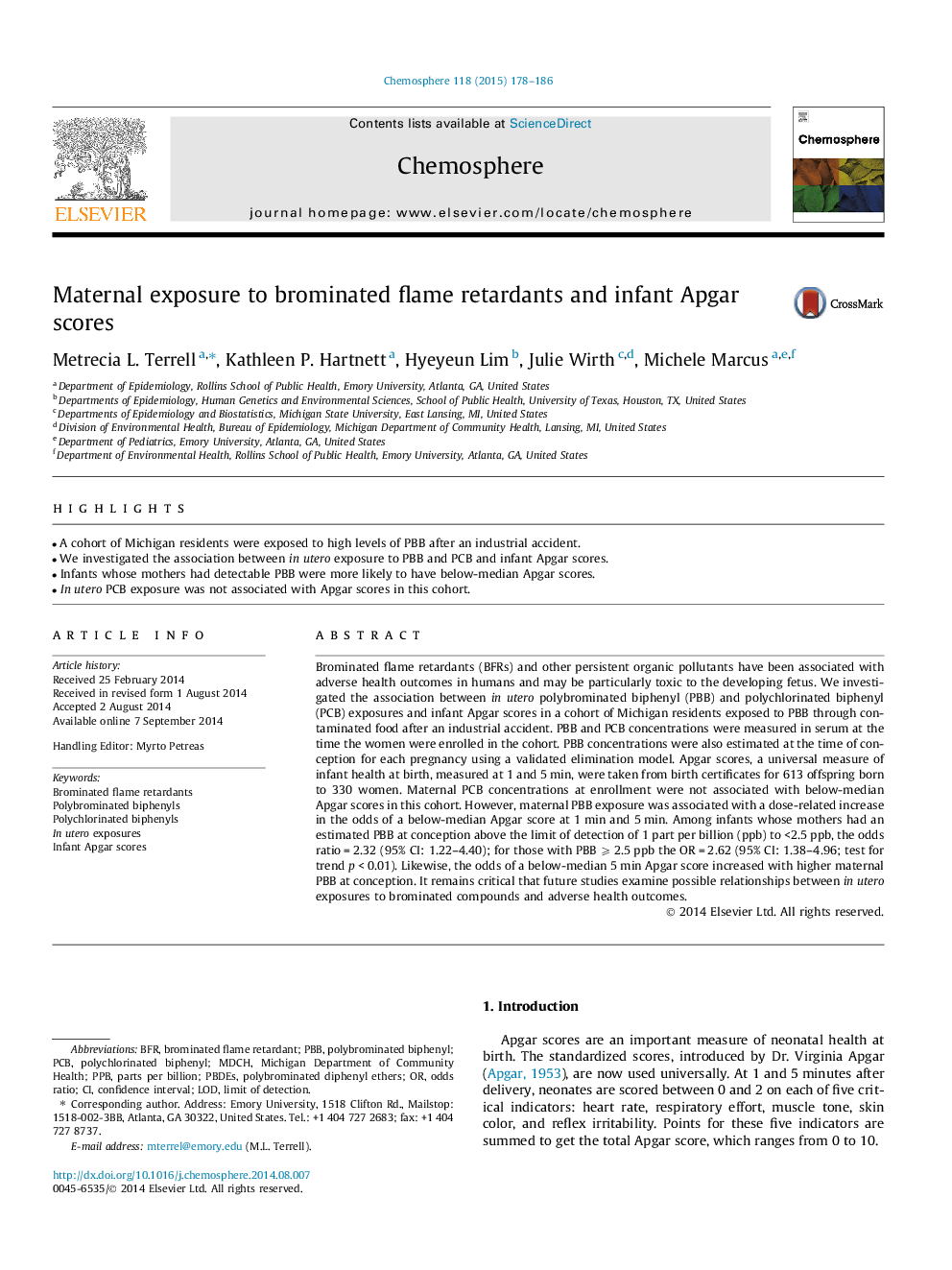| Article ID | Journal | Published Year | Pages | File Type |
|---|---|---|---|---|
| 6308362 | Chemosphere | 2015 | 9 Pages |
Abstract
Brominated flame retardants (BFRs) and other persistent organic pollutants have been associated with adverse health outcomes in humans and may be particularly toxic to the developing fetus. We investigated the association between in utero polybrominated biphenyl (PBB) and polychlorinated biphenyl (PCB) exposures and infant Apgar scores in a cohort of Michigan residents exposed to PBB through contaminated food after an industrial accident. PBB and PCB concentrations were measured in serum at the time the women were enrolled in the cohort. PBB concentrations were also estimated at the time of conception for each pregnancy using a validated elimination model. Apgar scores, a universal measure of infant health at birth, measured at 1 and 5 min, were taken from birth certificates for 613 offspring born to 330 women. Maternal PCB concentrations at enrollment were not associated with below-median Apgar scores in this cohort. However, maternal PBB exposure was associated with a dose-related increase in the odds of a below-median Apgar score at 1 min and 5 min. Among infants whose mothers had an estimated PBB at conception above the limit of detection of 1 part per billion (ppb) to <2.5 ppb, the odds ratio = 2.32 (95% CI: 1.22-4.40); for those with PBB ⩾ 2.5 ppb the OR = 2.62 (95% CI: 1.38-4.96; test for trend p < 0.01). Likewise, the odds of a below-median 5 min Apgar score increased with higher maternal PBB at conception. It remains critical that future studies examine possible relationships between in utero exposures to brominated compounds and adverse health outcomes.
Keywords
Related Topics
Life Sciences
Environmental Science
Environmental Chemistry
Authors
Metrecia L. Terrell, Kathleen P. Hartnett, Hyeyeun Lim, Julie Wirth, Michele Marcus,
